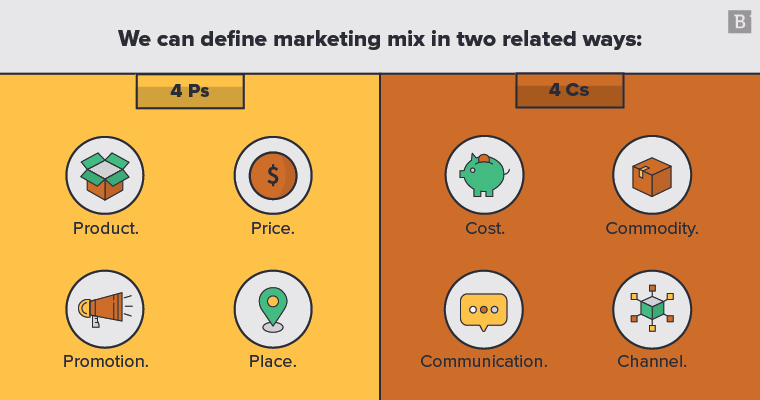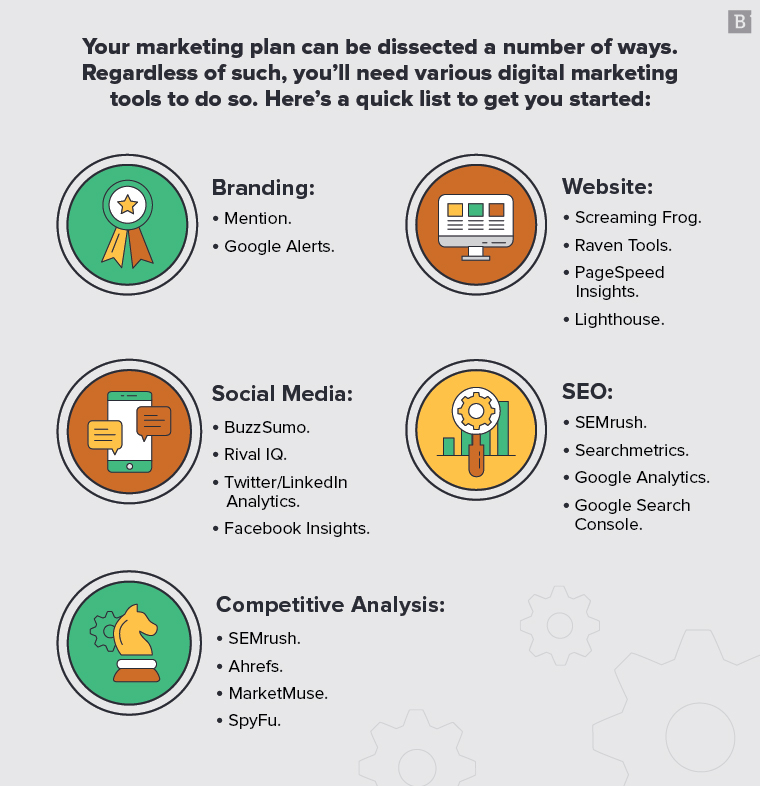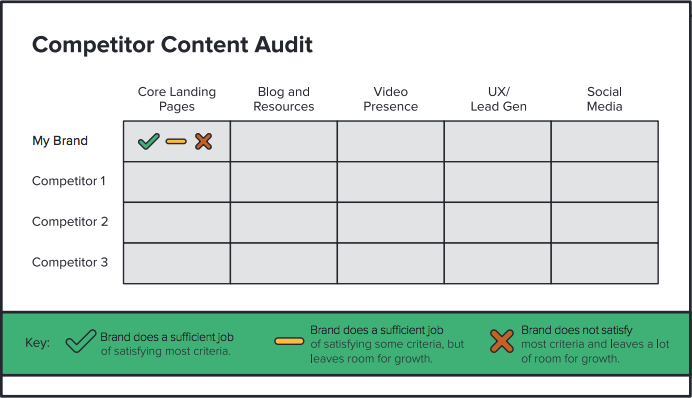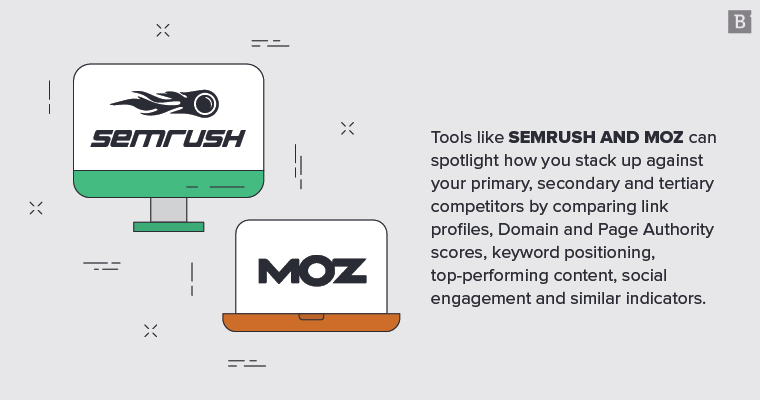

November 03, 2020
Michael O'NeillA marketing audit is a mechanism for listening to what your target audience wants and then optimizing your marketing strategy accordingly. Not sure what clients, prospects and high-value leads are interested in? Unclear on what brand values the public most likes? No idea how to go about refining your marketing plans to better match the future of your business? Trying to figure out why your conversion rates aren’t meeting expectations? A marketing audit can help. There’s no one-size-fits-all model for auditing your brand’s marketing programs (both digital and traditional), but there are generally accepted best practices for knowing what to look at, how to get started and how to convert your efforts into insights.

An audit turns your marketing strategy inside out, exposing all its strengths and weaknesses. It’s basically a SWOT analysis of how you go to market. When you conduct an audit will depend on your goals and your current market position. For instance, you may want to review your marketing assets prior to launching a new product or trying a new pricing strategy. By evaluating your marketing performance, including the objectives, tactics, processes, activities and propositions that comprise your marketing efforts, you gain newfound insight into the core systems of your business and your brand. Often, companies conduct targeted audits to assess specific aspects of their current marketing functions. For example, a systems audit would look closely at the marketing team’s workflow while a productivity audit might delve into what tools the team uses. You might also consider conducting a marketing environment audit that focuses mainly on competitor analysis. Upon the completion of a marketing audit, you should have actionable takeaways of how to improve your website, content, SEO and social media. And you should more fully understand your offline marketing, like business referrals, word of mouth, trade shows and other traditional sales-enablement strategies.
SEO:
Website:
Social media:
Offline:
Competitive analysis:
There are myriad metrics to dive into within each of these categories, and being as comprehensive as possible will provide additional opportunities for understanding your business and competitors.

Conduct your marketing audit in line with your core business goals.
Pulling together your commercial objectives into a report or short list provides a common understanding between all stakeholders involved in the audit process. Also think of what you’re auditing (content, site, product branding, etc.) through the prism of your marketing mix.
We can define marketing mix in two related ways:
4 Ps
4 Cs
Your marketing mix is a model for understanding how your marketing objectives should be achieved and the types of questions you should ask through your audit, such as:

As a general practice, an annual marketing audit should be integrated into your standard operating procedure. Before embarking on new marketing campaigns, cycle previous audit findings into your brainstorming sessions so that all of your content remains on brand and data-driven.
Compiling and cataloging all of your brand materials and marketing collateral is no easy feat. But starting with your sitemap and a spreadsheet is as good a place to begin as any.
Mapping URLs to product hierarchies, search terms and other categorizations keeps your marketing inventory clean and interactive.
Once you have a singular database that houses all of your inventory, you can use filtering and segmentation features to repurpose information for multiple uses. For instance, this database can be used for a targeted content audit, to identify competitive keyword opportunities or to uncover site performance issues.
Your marketing plan can be dissected a number of ways. Regardless of such, you’ll need various digital marketing tools to do so. Here’s a quick list to get you started:
Branding
SEO
Website
Social Media
Competitive analysis
Armed with these tools (most of the above accomplish a wide spectrum of marketing activities, so there’s no need to purchase more subscriptions than you need), it’s now a matter of putting them to good use, following the audit prompts to generate metrics and reports.

Many tools offer API integration with Google Analytics, which can speed up the audit process. However, these auto-generated figures can often contain data that’s irrelevant to your goals or columns of information that’s not entirely helpful. Hence, some marketers use a combination of automation and manual data entry to segment information as cleanly as possible.
Enter page URLs through your tool of choice and record a number of key indicators:
Under a separate tab in your database, you can log offline metrics, such as number of industry events on your calendar, number of business cards passed out, cold call close rates, number of in-person prospect meetings, etc.

After running an audit, what did you find? What jumps out?
The key to getting the most out of your marketing audit is to ensure you have actionable next steps to take. Oftentimes, this means organizing your action items into a priority list. For example:
1.
2.
3.
4.
Your company’s priorities may diverge from the above application, but the broader direction remains the same: Chart your course of immediate, near-term and long-term changes to your current marketing strategy, and inform all stakeholders of updates and timelines.
With a stronger understanding of the competitive landscape you face, you can now go to market with more confidence. Plus you have much more data to inform your decision-making.
Tools like SEMrush and Moz can spotlight how you stack up against your primary, secondary and tertiary competitors by comparing link profiles, Domain and Page Authority scores, keyword positioning, top-performing content, social engagement and similar indicators.
Your competitors may or may not have this information on you, but you can rest assured that your marketing team has done its due diligence in exposing all the places your competitors are faltering and how you can outperform them. Ultimately, this will help you achieve your marketing goals in a highly competitive environment.
One of the best ways to visualize your audit findings is to format your and your competitors’ marketing proficiencies in a matrix or table.
Use columns to distinguish between each of your core audit categories and graphically annotate how you stack up against competitors.

A formatted, handy guide serves as a go-to resource for all of your stakeholders across marketing, sales and the C-suite, and you can continuously update a cloud-based version so that you don’t have to re-audit and reformat in the future.
This approach turns your audit into a genuine business asset, and there’s nothing your boss likes more than having a SWOT analysis represented on a single sheet of paper.
Your marketing audit is meant to generate revelations about your brand. But it also needs to produce results.
Map your priority list to actual business investments and estimate the potential impact of your new actions, such as:

With clear commercial goals on hand, it’s up to you and your team to integrate marketing solutions into your business model, leaving no stone unturned.
Nearly half of U.S. B2B companies have formal marketing plans, which may feel low. Historically speaking, that number is on the rise, though.
Marketers are becoming more sophisticated in their strategies thanks to the adoption of marketing automation software, the backing of analytics-driven investments and hands-on experience with newer tactics like content marketing.
Companies are also more self-aware in terms of their market shares and segmentation relative to other organizations with whom they compete. Whether it’s social reach, organic presence or site UX, there are documented ways to compare and contrast one company’s marketing strategies to another, something that would not have been possible a decade ago before the proliferation of enterprise tools.
A successful marketing audit provides a leg up in the marketplace.
What’s better than that?

Editor’s note: Updated November 2020.